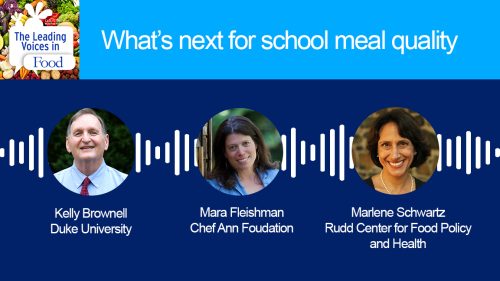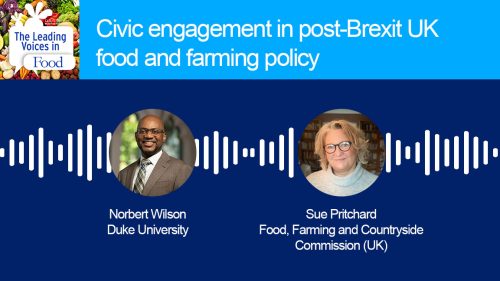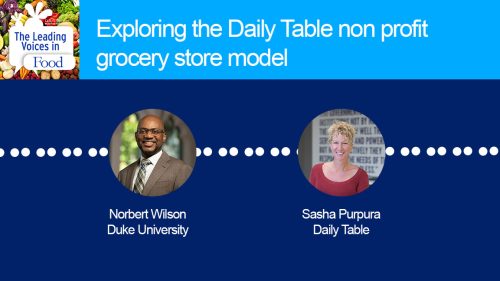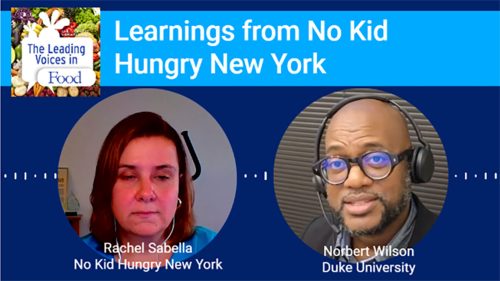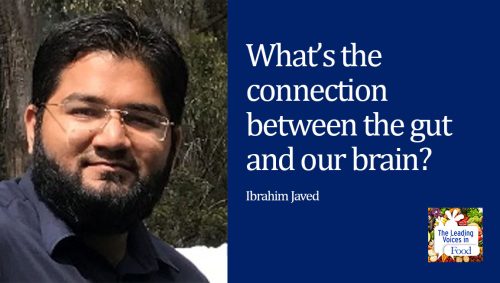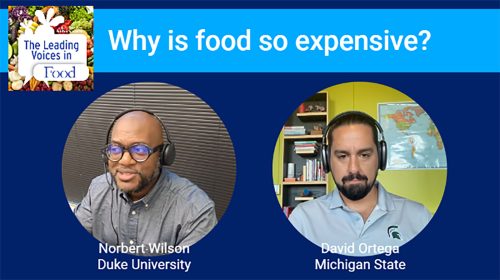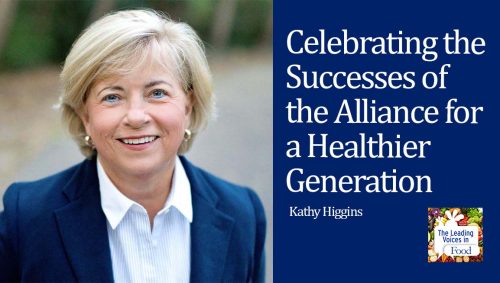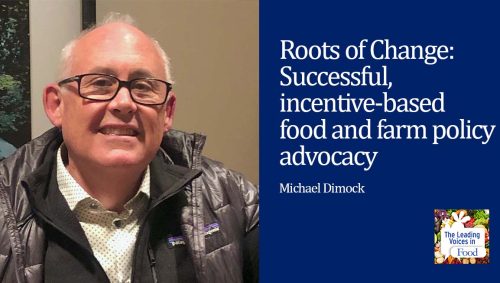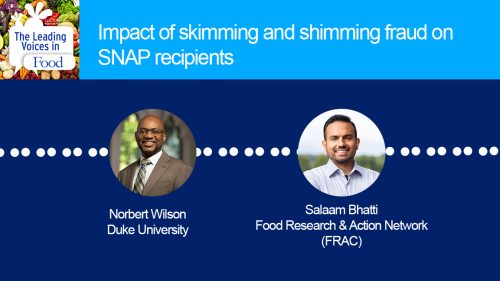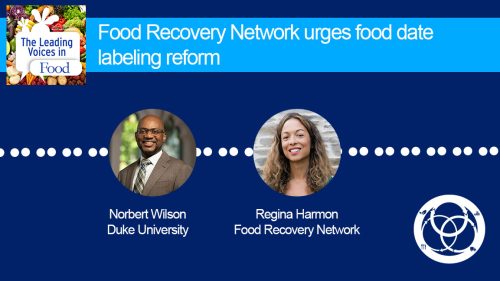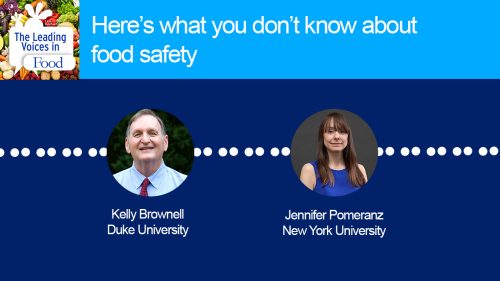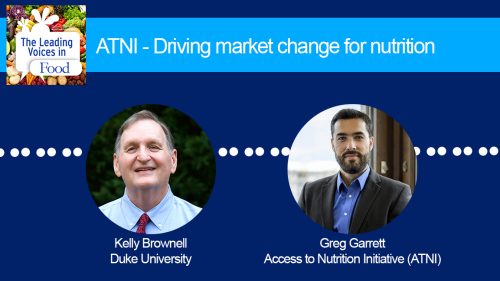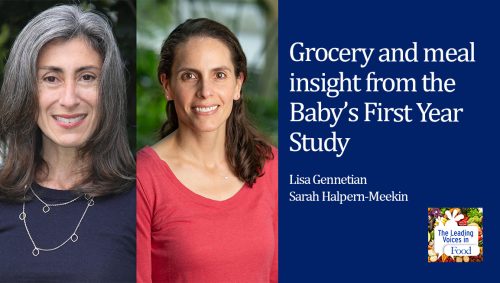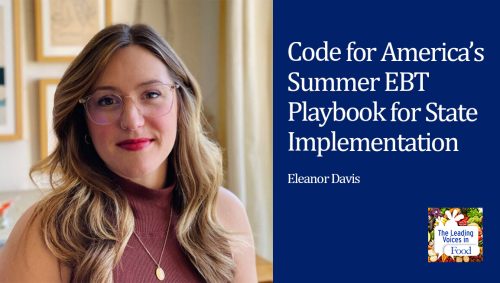E145: A Strategy to Improve SNAP Impact Through the Next Farm Bill
In 2023, the U.S. will reauthorize the Supplemental Nutrition Assistance Program, known as SNAP, as part of the massive Farm Bill. In the aftermath of the COVID-19 lockdowns and unprecedented innovations to SNAP benefits and delivery, what should the future program look like? As one of the country’s most important social safety nets, SNAP is a proven policy for stabilizing the economy, lifting Americans out of poverty, reducing food insecurity, and improving health while also reducing healthcare costs. In anticipation of this reauthorization, the Robert Wood Johnson Foundation’s Healthy Eating Research Program published a new report entitled “Strengthening the Public Health Impacts of SNAP: Key Opportunities for the Next Farm Bill.” The report identified the evidence-based changes that have the greatest potential to improve SNAP participants’ nutrition and their overall health. And the stakes on this are really high because the lives of so many people are affected. Today, we’ll be talking with Duke University’s Megan Lott, deputy director of the Robert Wood Johnson Foundation’s Healthy Eating Research Program, and coauthor Catherine Woteki, former under secretary for the USDA’s Research, Education, and Economics mission areas, who is now on the faculty of Iowa State University and at the University of Virginia, and she’s also the president of the Charles Valentine Riley Memorial Foundation.
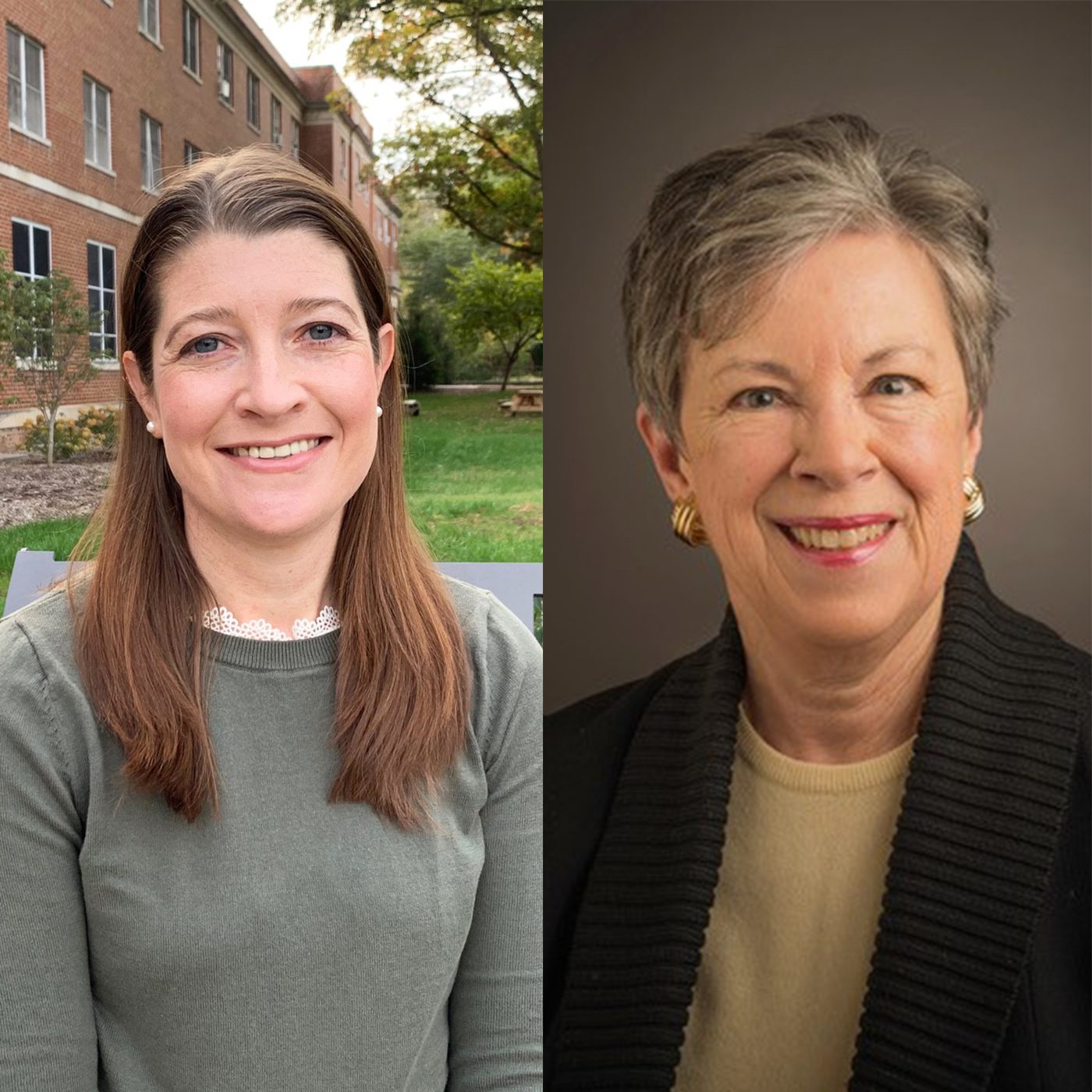
Megan Lott serves as Deputy Director for Healthy Eating Research, a national program of the Robert Wood Johnson Foundation, which supports research on environmental and policy strategies to promote healthy eating among children. In this role, Megan manages day-to-day program operations, engages in collaborations with key partners, and identifies research priorities to advance program goals. Megan is a Registered Dietitian with a B.S. in nutrition Sciences and dietetics from the University of Cincinnati and a Master’s in Public Health from the University of North Carolina at Chapel Hill. She is based at the Duke Global Health Institute at Duke University.
Dr. Catherine E. Woteki is a Distinguished Institute Professor with the Biocomplexity Institute at the University of Virginia. She also is currently a Professor of Food Science and Human Nutrition at Iowa State University where she served as Dean of the College of Agriculture from 2002 to 2005. Woteki was Undersecretary for United States Department of Agriculture’s (USDA) Research, Education, and Economics (REE) mission area, as well as the department’s chief scientist from 2010 to 2016. Her responsibilities included oversight of the four agencies that comprise REE, the Agricultural Research Service, National Institute of Food and Agriculture, Economic Research Service, and National Agricultural Statistics Service, as well as the National Agriculture Library and National Arboretum.
Interview Summary
Megan, let’s begin with you. And I’d like to know about the impetus for the report. So why did you decide to focus on opportunities to strengthen SNAP in the next Farm Bill?
Megan: Healthy Eating Research’s mission is to support and disseminate research and policy systems and environmental strategies that promote healthy eating among children and advanced nutrition and health equity. And we really strive to identify policy relevant, timely research gaps, fund those studies, and then communicate findings to decision makers. The latest report, authored by a seven-person team representing disciplines across law, policy, public health, and nutrition, focuses on the USDA Supplemental Nutrition Assistance Program, known more commonly as SNAP.
SNAP is the largest federal nutrition assistance program in the country. Prior to the COVID-19 pandemic, SNAP served an average of 37 million Americans each month. During COVID, that participation rose dramatically, now estimated to serve 42 million Americans each month as many people have lost jobs or other sources of income. To put this in perspective, SNAP serves an estimated 18% of households in the U.S. — that’s nearly one in five. More than 2/3 of these are families with children, and about 1/3 are households with seniors or people with disabilities. So the program has a really large population reach, reaching many vulnerable individuals. While temporary benefit increases put in place during COVID have provided crucial support to families, there are additional long-term program changes that can improve food security, diet quality, health, and wellbeing for program participants. And this new report reviews the evidence in order to identify evidence-based policy changes with the greatest potential to improve SNAP participants’ diet quality, and overall health.
As part of the development of the report, we brought together 30 experts with researchers and practitioners representing expertise across hunger relief, charitable food, advocacy, agriculture and sustainability, equity, and state government for a virtual convening. The participants were instrumental in sharing insights on the opportunity areas and helping to shape the potential paths forward. So as you mentioned, the research was really quite timely because it focuses on opportunities for strengthening the public health impacts of SNAP in the next Farm Bill, which we estimate will be 2023, as well as through more immediate policy opportunities.
The report focuses on maximizing efforts over the next two years, in particular, to help translate research into action and, where needed, address critical knowledge gaps. And the continued pandemic response and associated economic recovery may necessitate the need for even bolder changes to SNAP either in the next Farm Bill or sooner through stimulus relief activities coming from Congress or executive orders.
Thanks Megan. It’s very helpful background to have. And you know, the numbers that you presented about the number of families that are touched by the SNAP program, I’ve heard those numbers 10,000 times and every single time I’m impressed by how broad a scope the program has and how many people benefit from it. So getting the policy right is really important. So Cathie, let me ask you a question. The report identified four key areas for strengthening the impact of SNAP. Can you tell us a bit more about these areas?
Cathie: We identified four major areas where Congress could take evidence-based actions to strengthen the health benefits of SNAP. So the first is increasing access to the program, as well as the adequacy of the program. Research has shown that increasing participation, especially among socially disadvantaged groups, reduces food insecurity, reduces their healthcare costs, and helps to stabilize the economy overall. We also made some recommendations to increase the benefit that’s based on the costs of the Thrifty Food Plan, but the administration has already taken a very important step and revised the Thrifty Food Plan, which has resulted in a benefit increase of about 20% that’s very much in line with the recommendation that we put forward in the report.
The second area is in strengthening the federal nutrition education program, SNAP-Ed is what it’s called, that provides SNAP participants with direct access to education that increases not only their knowledge, but also their shopping skills. Currently, SNAP-Ed program only reaches about 15% of participants.
The third area of recommendations are related to promoting healthier foods and beverages in the retail environments where SNAP participants do their grocery shopping. So this would help the retailers, encouraging them, providing incentives, to stop and promote a more health-promoting assortment of foods, ensuring that more retailers are authorized for online SNAP. As we’ve seen during the pandemic, it’s been really important to be able to order food online and promoting healthier purchases with SNAP benefits, including those online purchases.
The fourth area is fostering a much more resilient food system with an eye toward supporting stronger infrastructure and coordination around nutrition security before, during, and after emergencies. So we’re still within the pandemic emergency, but emergencies occur due to flooding or hurricanes where food and nutrition security are put at risk. Nutrition security is a bit different than food security in that the focus is on more consistent access availability and affordability of foods and beverages that promote health and wellbeing. Promoting sustainability and resiliency within the food system is going to have benefits for everybody that go beyond the SNAP program.
Cathie, thanks for the overview. It’s very helpful. But let me just mention one thing. I know that there are big differences across states and the number of eligible people who actually are participating in the SNAP program. And that has to do in part with whether the states want to make it easier or hard for people to sign up for the program. Is there anything that could be done at the federal level to maximize how easy it is to sign up and maximize participation?
Cathie: With authorization from Congress, the federal government can make changes to the rules that states have to abide by in implementing the program. In the report, we also recognize that there are differences within states depending on whether there are Native American tribes residing within the state. And federal rules, tribal rules — there are different programs that have different requirements that are associated with them. And by making those eligibility and enrollment policies more equitable, these groups that are currently receiving the benefits but under different programs would have better access to more health-promoting food.
Thanks, that makes good sense. So Megan, the COVID-19 pandemic has made it really clear that the current food system creates significant racial inequalities and that these influence health outcomes. Can you help discuss how the concept of advancing equity was addressed in this report?
Megan: Yeah, definitely. And I think it’s important to go back for a second. When thinking about the public health impacts of SNAP, we primarily focused on opportunities to improve participants’ food security, diet quality, and overall health and wellness. And so those were the main areas central to all of the evidence reviewed. Both before and during the pandemic, food insecurity was disproportionately higher among low-income and rural populations, as well as among communities of color. Diet-related chronic diseases, largely resulting from poor diet quality, overweight and obesity are among the leading causes of death in the U.S. with the greatest disparities among black, Latinx, and Native American populations. So these disparities and the idea of achieving health equity, where all populations have access to the community conditions and opportunities needed to reach their full potential and to experience optimal health and wellbeing, were central to the report development. Research really supports that the opportunities have the potential to help close long-standing inequities in these public health outcomes and promote cost savings in other federal safety net programs like Medicaid, for example.
You probably noticed as Cathie was talking that racial equity and tribal government equity were not called out as standalone opportunities. And that was really intentional. The report authors and convening participants gave these topics much consideration and all felt that equity should be woven throughout all efforts aimed at strengthening the public health impacts of SNAP, among other federal nutrition assistance programs. So throughout the report, there is discussion of health equity and improving tribal government equity, which really recognizes the need for all tribal governments to have access to conditions and opportunities needed to reach their full potential. For example, one key action here to advance tribal governments’ equity is for USDA to grant tribes the authority to administer the SNAP program, which they currently do not have. So fully incorporating a racial equity and tribal government equity lens into these efforts will require direct engagement with SNAP participants and those who are eligible for the program in order to fully understand the end user experience and key barriers to access. And that’s not something that has traditionally happened.
Also critical is a focused effort on socially disadvantaged populations, such as mixed immigration status households, young adults who are not attending college, and other low-income adults who may not have children, but whose participation in the program is limited by work and time limit requirements. And those really vary state by state. I think it’s important to note without a deliberate focus on racial equity, tribal government equity, and socially disadvantaged populations, the full potential of SNAP to promote the public’s health cannot be realized. Importantly, SNAP is not always easily accessible, particularly for really rural remote communities. A good example here are Indian reservations where structural issues perpetuate a lack of access to affordable healthy foods and beverages, including safe drinking water.
Thanks very much, Megan. Cathie, you know that whenever you want to change anything in terms of public policy and improve public health, including with SNAP, there are going to be barriers. So what do you think are some of the barriers here to making these changes?
Cathie: Over the past decade, the federal nutrition safety net has come to focus more on improving diet quality, as well as preventing obesity among program participants. And that shift in thinking about the program to a more health-promoting program in areas where food insecurity is high has been very important because getting the understanding among our legislators and thought leaders that this coexistence of food insecurity with obesity is something that can and should be addressed through this program has been really important.
We talked earlier about the prevalence of obesity, that it is a problem that affects the entire American population, about a quarter of all adults are overweight or obese, and about half of the black and Latinx adult population are. About a fifth of our children are obese, and for black and Latinx children, this is even higher, about a quarter. And among Native American adolescents, they’re about 30% more likely than non-Hispanic white adolescents to be obese. And among Native American adults, that’s more than 50%. So nearly half of adults are projected to have obesity by 2030. And as we’re looking forward with changes to this program, we need that trend in mind. Another barrier for strengthening the public health aspects of SNAP has been developing the evidence-based and really culturally and contextually sensitive approaches that could be built into our policies for the SNAP program and, more broadly, all of the social safety net programs that could really make a meaningful impact on improving the quality of the foods that people are able to purchase under this program and then the health outcomes that will come through improvements in their diet quality.
So those have all been a barrier, but I think it’s also worthwhile to be positive about where we stand. And increasingly, surveys find that SNAP participants and those who are eligible to participate are really interested in approaches that would help them to improve the healthfulness of the food that they’re eating. We really need to listen while we also work on increasing that evidence space so that we’ve got good approaches.
Let me ask you both, what would you recommend to Congress? And Megan, let’s start with you.
Megan: Well, as I mentioned earlier, the Farm Bill expires in about two years. So the next two years are really critical, in our opinion, for Congress and the government in general to lay the groundwork for adopting evidence-based changes that will enhance SNAP’s public health impacts. That could come in the form of funding additional studies or requesting GAO reports or other action to help do some additional analyses or special studies to look into where there gaps and evidence, and really lay out some of these changes, explore the feasibility. And a big part of that is also potentially holding hearings in DC and across the country to collect information to inform some of these legislative changes. I’ll let Cathie talk about some of the examples.
Cathie: We anticipate that Congress will be holding hearings over the next few years as they’re gathering evidence to inform changes that they would be making across the Farm Bill, including the SNAP reauthorization. We’ve made some suggestions for Congress of things that they could do. Equity is top of mind. Congress could post hearings to explore emerging best practices that promote diversity, equity, and inclusion within the SNAP program, as well as more broadly among other social safety net programs. A second thing, Congress could require that USDA evaluate the nutritional impact of the Thrifty Food Plan that is the basis for establishing the SNAP allotment. And then they could also authorize USDA to approve state waiver requests and appropriate the funds to support evaluations of experiments that states might want to do within the program to increase the health-promoting benefits of the program.

